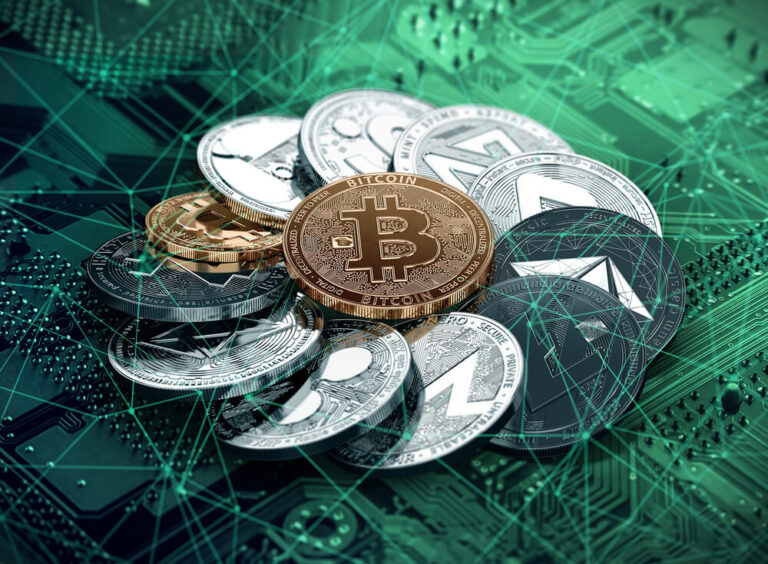A monthly review of what's happening in the crypto markets enriched with institutional research on the most important topics in the industry in cooperation with the Swiss digital asset specialist, 21Shares AG.
May ended with the market cap of the entire crypto assets market resting at $1.38T down from $1.82T since April. Between panic sellers and hodlers, returning to the fundamentals has been our main thesis that resonates especially during challenging times. In this monthly review, we will delve deeper into the macroeconomic factors driving these drops and showcase some valuable onchain metrics indicating healthy fundamentals. We will also shed light on Terra’s collapse, what led to it, and the repercussions that followed. Moreover, this report will cover the month’s most significant developments on the regulatory landscape, DeFi, and the wider metaverse.
Macro and regulations
Consumer prices in the US have increased by 8.3% in April, the highest in a span of four decades. Inflation struck emerging markets harder, with consumer prices in countries like Lebanon and Venezuela rising over 200%. The World Bank declared a global food crisis, estimating that food products may have increased by 37% year-over-year. On May 4, as a bid to fight inflation, the Federal Reserve raised its benchmark interest rate from 0.50% to 0.75-1%.
There are a number of developments in global regulation addressing the crypto assets industry that happened this month. In response to the recent disclosures made by Coinbase, the Biden administration is reportedly pushing for a bill that would effectively segregate customers’ funds in a centralized crypto exchange, from their own corporate funds. Germany is exempting individuals selling Bitcoin (BTC) or Ethereum (ETH) more than 12 months after the acquisition from paying taxes on the sale. A week after the latter’s announcement, Binance’s CEO confirmed that his team is in talks with German regulators to seek approval in Europe’s largest economy.
The Norwegian parliament rejected a bill banning Bitcoin mining, proposed back in March. Norway contributes up to 1% to the global Bitcoin hash rate, leveraging the country’s renewable energy generated by hydropower. Other developments worth noting around the world:
- Argentina banned financial institutions from offering clients any operations involving digital assets unregulated by the central bank.
- Nigeria is upgrading its Central Bank Digital Currency (CBDC), eNaira, to be used on a wider range of goods. The United Nations raised concerns that this effort is crippling Nigeria’s fintech sector.
- Portugal once regarded as a tax haven for crypto investors, will be taxing crypto exchanges and crypto sales in the near future.
- The USA declined Tether’s request to conceal documents related to describing the nature of its cash reserves from the public.
- Korea fined Terra’s founder $78M for evading taxes.
The adoption of crypto assets is still on the rise despite the ailing market sentiment. Nomura, Japan’s largest investment bank, started offering Bitcoin derivatives and is working on launching a subsidiary to help institutional clients diversify into cryptoassets, DeFi, and NFTs. One of Switzerland’s oldest asset management companies, Julius Baer, will be offering exposure to crypto assets for its high net-worth clients.
Decentralized Finance (DeFi)
May was a ruthless field for battle-testing stablecoins, but it was also a month of new beginnings. Due to structural vulnerabilities, UST, Terra’s algorithmic stablecoin, quickly moved away from its peg to the dollar dragging LUNA down to zero. The crash came mainly due to the uncollateralized nature of UST, whose curve was then flattened by the unsustainable high yields in the Anchor protocol – with 75% of UST’s circulating supply – promising up to 20% APY. Failing to rescue its coins, Terra’s founder unveiled a revival plan afterwards. This was not an exclusive battlefield. Fantom’s stablecoin (fUSD) and DEUS Finance’s (DEI) lost their pegs to the dollar.
One lending protocol on Fantom, Scream, kept the price of the unpegged stablecoins hardcoded to $1 on its platform and incurred $35M in bad debt. Venus Protocol and Blizz Finance on Avalanche were exploited also due to the difference in LUNA price and Chainlink’s price feed. Curve’s liquidity pool, 3-pool, fell victim to the domino effect and pulled Tether’s USDT with it shortly below the peg, but bounced back in less than 24 hours. USDT was not the only stablecoin that survived the battle, Tron’s algorithmic USDD went live in the midst of the bloodbath and has been pegging great thus far. Also on the upside, this month saw leaders of traditional finance confiding in DeFi, namely stablecoins. Jane Street took out a $25M USDC loan from BlockTower Capital through the institutionalized Clearpool protocol.
NFTs, DAOs, and the Metaverse
Social media platforms have been taking NFTs for a spin this month, and we can safely say vice versa. Instagram allowed a few artists and collectors to display their NFT collections on feed and stories through their respective Metamask, Trust, and Rainbow wallets. In response to requests by industry partners, Spotify also allowed a few users to preview a select number of NFTs via an artist’s profile page. Users can then learn more about a specific NFT and choose to purchase it through an external marketplace. On another note, Aave launched its Lens protocol, a decentralized social graph that allows developers to build Web3 social media platforms on the Polygon network. Users can mint a profile, follow others, and create and collect posts all on-chain.
In a bid to get closer to the community, Dubai’s Virtual Asset Regulatory Authority unveiled its HQ in Sandbox, to facilitate collaborative engagement between crypto service providers and international regulatory authorities. In other news, Opensea announced the launch of Seaport protocol, allowing users to acquire NFTs in different ways. For instance, if you own an NFT worth 40 ETH and you want another one worth 100 ETH, you can exchange it with your NFT and 60 ETH.
On the gaming front, VC giant Andreessen Horowitz (a16z) launched GAME FUND ONE with plans to invest $600 million across game studios, gaming-related consumer apps and infrastructure. The fund is built on the foundation that games will play a pivotal role in defining how we socialize, play, and work over the next century. Moreover, a16z believes that gaming infrastructure and technologies will be important building blocks of the Metaverse, an opportunity that could outweigh the current $300M game industry.
Data & Crypto Infrastructure
There has been some institutional attraction to crypto infrastructure layers. After a track record of securing billions of dollars invested in DeFi markets, Chainlink Keepers were hired to power automated payments to a real-estate platform in Latin America. LaProp will allow investors to buy tokenized shares in various real-world properties, which will yield a percentage of income from rental payments. Norway is also using Nahmii, an interoperable Layer 2 solution on Ethereum, to experiment with its CBDC.
As the Arabic proverb goes, “the crisis of a people could be deemed as gains for others,” Polygon, Fantom, and Juno are promoting their networks to attract developers from Terra. Other developments in the data and crypto infrastructure ecosystem were as follows:
- Flow raised $725M to fund blockchain growth; with a focus on gaming, infrastructure, DeFi, content, and creators.
- Polkadot launched XCM, a new cross-chain communication protocol, secured at the same level as Polkadot’s Relay Chain; which enjoys much higher security than the infamous bridges.
- Ethereum’s merge from Proof of Work to Proof of Stake will happen as early as August and as late as October.
- Optimism unveiled the Bedrock upgrade which will boost speed, reduce cost and “shoot for EVM-equivalence”.
- Binance added support for Optimism, to help reduce costs and improve transaction speed. Until there are sufficient assets in the exchange’s wallets, the activity to which Optimism is applied is limited to deposits.
- Users on Coinbase can now access Ethereum dApps via Coinbase mobile browser.
- Robinhood is launching a semi-custodial wallet.
- Ledger added a browser extension for its hardware wallet called Ledger Connect.
What We Expect
One thing’s for sure, we will see more assertive measures towards regulating stablecoins. Last month saw regulators expressing concerns and releasing warnings. As congress prepares to finalize a framework for stablecoins by the end of the year, regulators around the world are likely to take similar measures. The UK, which has greenlit stablecoins as a payment in April, are already taking action steps in this effort.
Price developments will continue moving sideways until the macro factors and overall market sentiment get in better shape. However, rising inflation rates alongside deflating disposable income could put the consumer credit market in a difficult environment if defaults start to hit. LendingClub reported that 36% of people making $250K or more annually live paycheck to paycheck. As such, we may face less capital inflows in risk on assets than in a month prior to the break of the Russia-Ukranian conflict.
Furthermore, the investor sentiment is in the negative across the board especially in the aftermath of the Terra/Luna’s debacle. The Net Unrealized Profit Loss indicates that market sentiment is in fear mode, the indicator stands at 0.18. The last time the metric was at this level was in the aftermath of the March 2020 crash. At 21Shares, being devoted believers of innovation, our mantra during risk-off environments is revisiting the fundamentals: the real value of this asset class is derived from its underlying technology.




